Real People-Alutiiq Word of the Week-January 28th
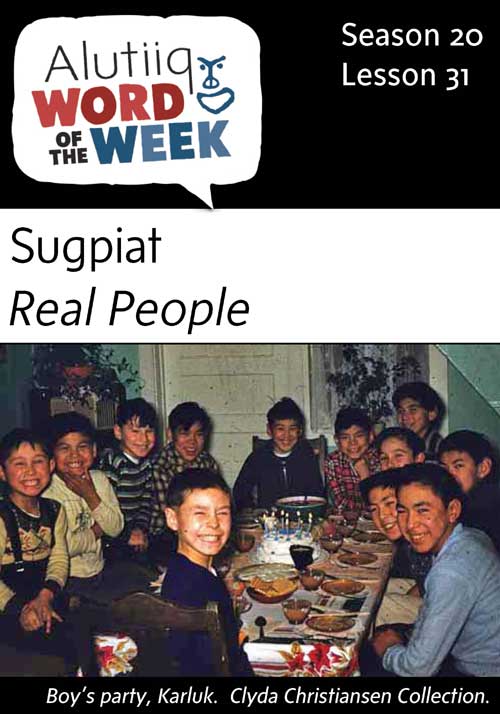
Sugpiat–Real People “Sugpianek” ap’rtaakiikut cuumi, nutaan ap’rtaaraakut Alutiit–They used to call us Sugpiaq before, but now we are called Alutiiqs.…

Sugpiat–Real People “Sugpianek” ap’rtaakiikut cuumi, nutaan ap’rtaaraakut Alutiit–They used to call us Sugpiaq before, but now we are called Alutiiqs.…
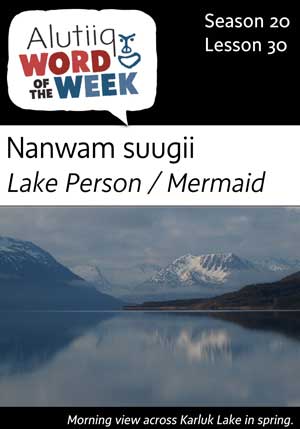
Nanwam suugii–Lake Person / Mermaid Suuget ilait niu’uqurtaarait Nanwam suugi ell’uni.–Some people always talk about there being a ‘lake person.’…
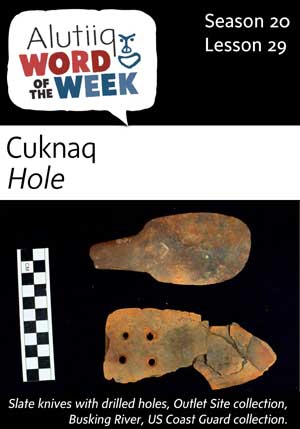
Cuknaq–Hole Cuknangq’rtuq ulugken.–Your pants got a hole. The tools of classical Alutiiq society were often complex, featuring many parts. A…
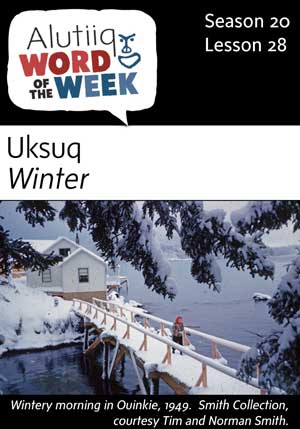
Tamuuliciqukut uksurpailan.–We will make dry fish before the winter. Winter in the Kodiak Archipelago quickly follows summer. As the days…
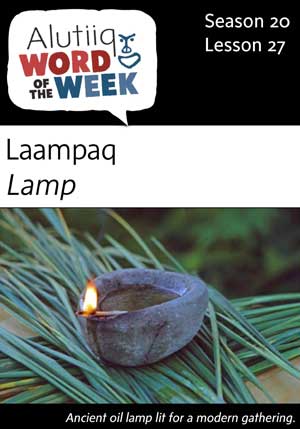
Laampaq–Lamp Laam’paaq kuarsgu.–Light the lamp. From Kodiak to Greenland, Native people used stone oil lamps to heat and light their…
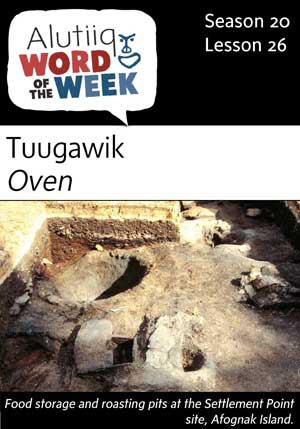
Tuugawik–Oven PiRuq tuugawigmek ansgu.–Take the perok out of the oven. For many thousands of years, people around the world have…
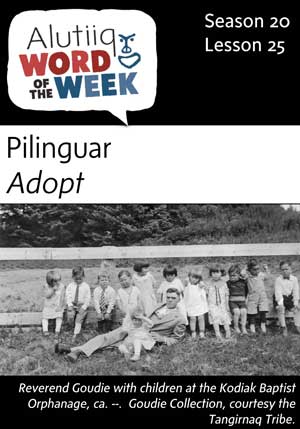
Pilinguar–Adopt Wiiwaq pilinguaq–My younger sibling is adopted. The Alutiiq word pilinguar translates literally as, “to make one’s own.” Alutiiq speakers…
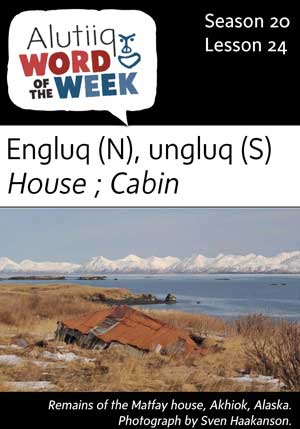
Engluq (N), ungluq (S)–House / Cabin Nutaamek engluliyut.–They are building a new house. When Alutiiq people travel outside Alaska or…
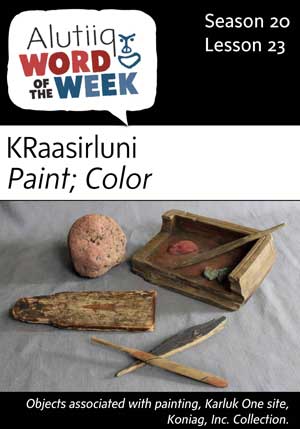
KRaasirluni–Paint; Color KRaasiyaqa maaskaaqa.–I am painting my mask. Painted designs are the final artistic touch on many Alutiiq objects. Artisans…
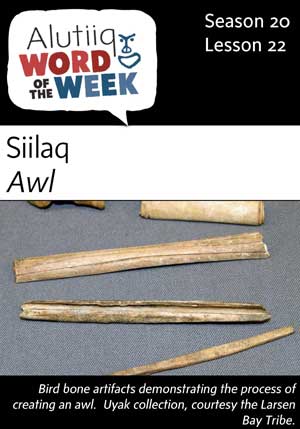
Siilaq–Awl Siilaq ipegtuq.–The awl is sharp. An awl is a sharp, pointed tool used to punch holes in leather. In…